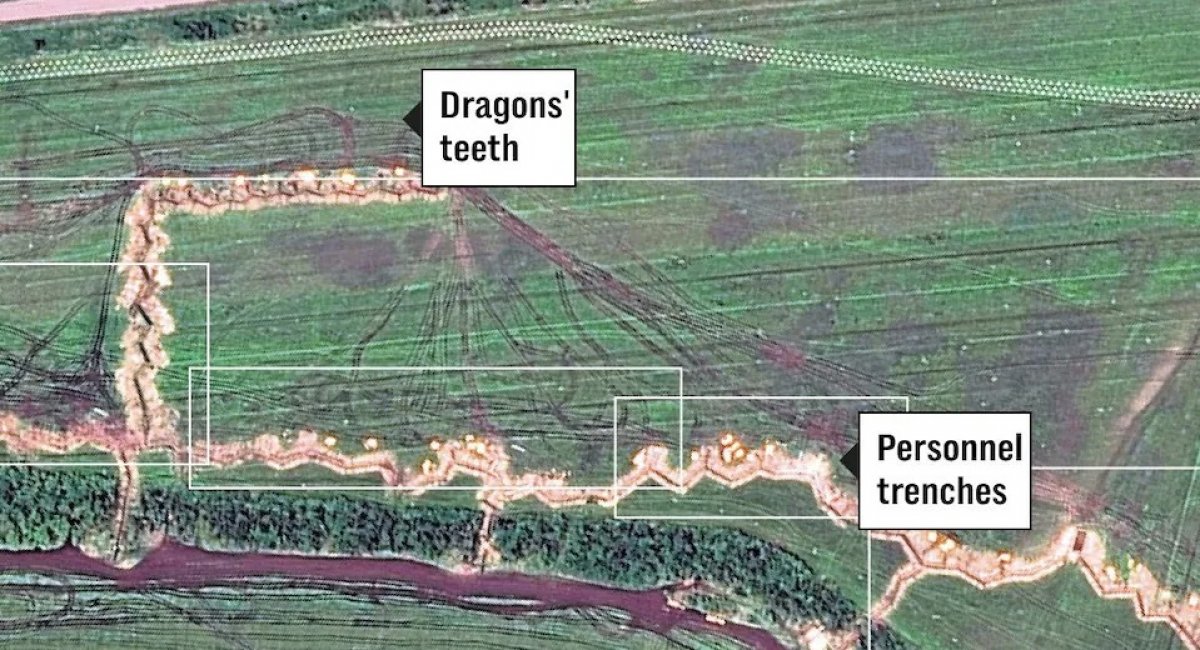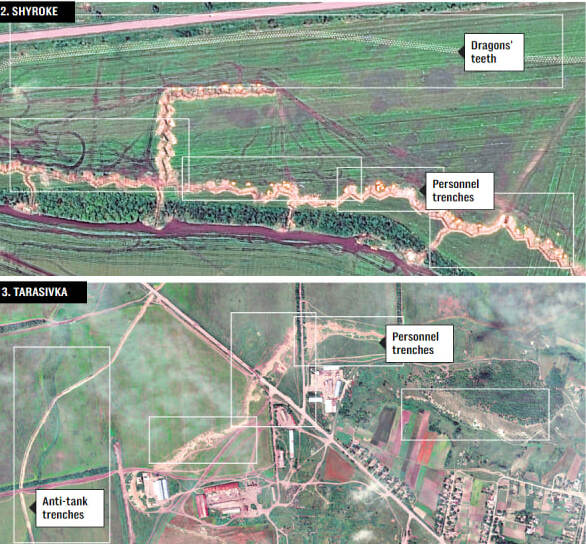
The occupiers have built 1000 km of fortifications in several rows on the front, which are now storming the Ukrainian Armed Forces
This emphasizes the complexity of the task that our defenders are performing at the front
The British newspaper The Telegraph has published satellite images from Maxar Technologies. These images show the echelon fortifications that the Russian occupiers have built in several echelons along the almost 1,000-kilometer front line. These fortifications consist of minefields, anti-tank ditches and trenches that can stretch more than 30 kilometers deep, and which impede Ukrainian troops’ efforts to liberate the temporarily occupied territories of southern Ukraine.
The Telegraph quotes one of the NGU officers as saying that the racists have built very strong fortifications that will be very difficult to overcome.

The authors of this British publication also detail that they have satellite images of the racist fortifications near the town of Mykhailivka, approximately 50 km from the city of Tokmak in the temporarily occupied part of Zaporizhzhia region. It shows, in particular, that the occupiers chose agricultural land in the area to dig kilometers-long ditches. At the same time, many of the trenches for personnel were dug almost 30 kilometers from the current front line.
Other satellite images also show that the occupiers deliberately dug such deep trenches to camouflage their artillery positions, which could launch surprise attacks on advancing Ukrainian troops.

It is important to note that the Russians did not install their anti-tank “dragon teeth” in isolation, but rather as a barrier to restrain the movement of our armored vehicles in front of their personnel chances. It should also not be ruled out that there may be dense minefields between the “dragon’s teeth” and the trenches.
To characterize the racist fortifications, The Telegraph also cites a recent report by the British Royal United Kingdom Institute for Defense Studies, which states the following. The first line of defense of the occupiers really looks like a continuous “foxhole” designed only for infantry. The second line of defense is properly made trenches, often with concrete fortifications for firing points.

The distance between these two lines can be up to 5 km, with an anti-tank ditch 4 meters deep and 6 meters wide between them, and a fire control zone on each of the defense lines can be from 700 meters to 1 kilometer. The task for the third line of defense, which is often dug by the occupiers, is to covertly deploy reserves of equipment and manpower.
All of the above demonstrates the depth and complexity of the task that our defenders have to perform at the front.

